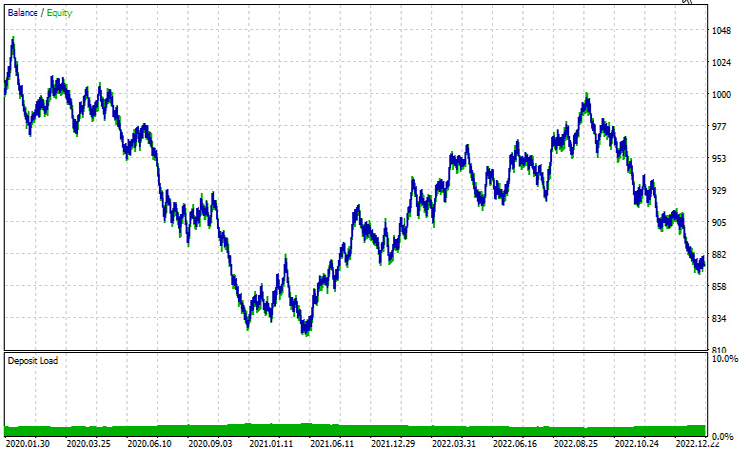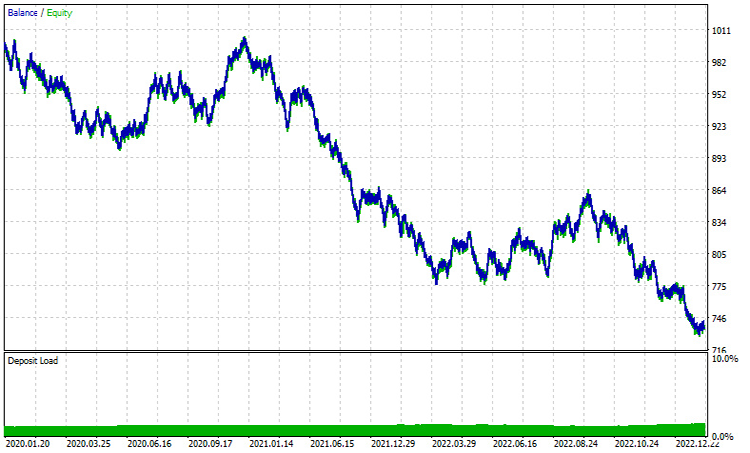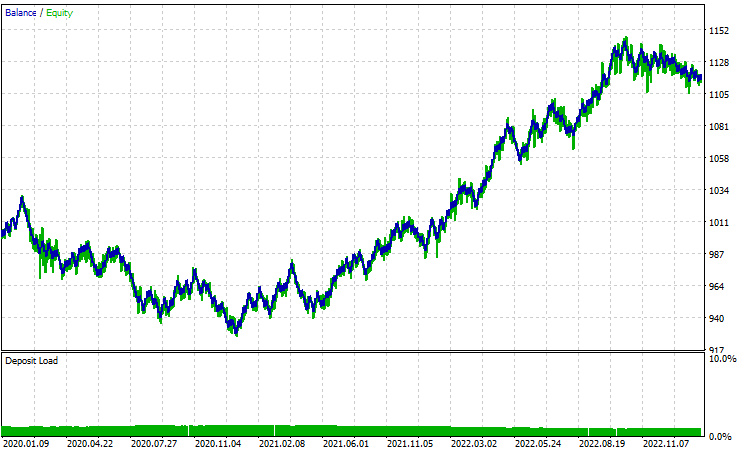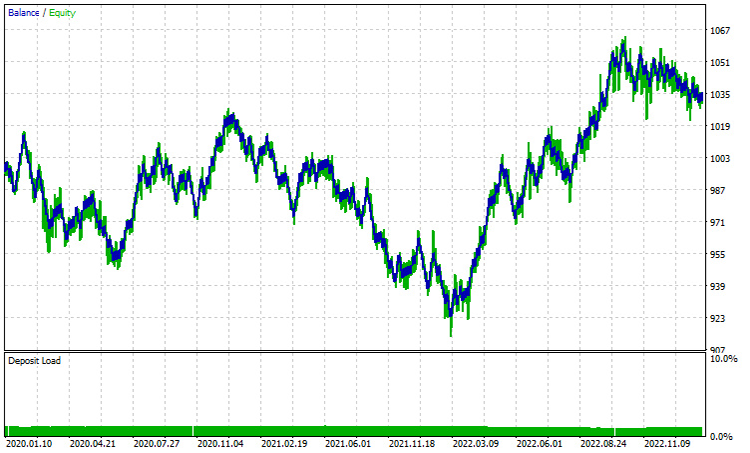
Data Science and Machine Learning (Part 19): Supercharge Your AI models with AdaBoost
What is Adaboost?
Adaboost, short for adaptive boosting is an ensemble machine learning model that attempts to build a strong classifier out of weak classifiers.How does it work?
- The algorithm assigns weights to instances based on their correct or incorrect classification.
- It combines weak learners using a weighted sum.
- The final strong learner is a linear combination of weak learners with weights determined during the training process.

Why should anyone care about using Adaboost?
Adaboost provides several benefits including:
- Improved Accuracy – Boosting can improve the overall accuracy of the model by combining several weak model predictions. Averaging the predictions made by all the models for regression or voting over them for classification to increase the accuracy of the final model.
- Robustness to Overfitting – Boosting can reduce the risk of overfitting by assigning the weights to the misclassified inputs.
- Better handling of imbalanced data – Boosting can handle the imbalanced data by focusing more on the data points that are misclassified.
- Better Interpretability – Boosting can increase the interpretability of the model by breaking the model decision process into multiple processes.
What is a Decision Stump?
A Decision Stump is a simple machine learning model used as a weak learner in ensemble methods like Adaboost. It is essentially a machine learning model simplified to make decisions based on a single feature and a threshold. The goal of using a decision stump as a weak learner is to capture a basic pattern in the data that can contribute to improving the overall ensemble model.
Below is a brief explanation of the theory behind a decision stump, using the Decision tree classifier as an example:
1. Structure:
- A decision stump makes a binary decision based on a single feature and a threshold.
- It splits the data into two groups: those with feature values below the threshold and those with values above.
- This is commonly deployed in the constructor of most of our classifiers in this Library:
CDecisionTreeClassifier(uint min_samples_split=2, uint max_depth=2, mode mode_=MODE_GINI); ~CDecisionTreeClassifier(void);
2. Training:
- During training, the decision stump identifies the feature and threshold that minimizes a certain criterion, often the weighted misclassification error.
- The misclassification error is calculated for each possible split, and the one with the lowest error is chosen.
- The fit function(s) is where all the training is done:
void fit(matrix &x, vector &y);
3. Prediction:
- For prediction, a data point is classified based on whether its feature value is above or below the chosen threshold.
double predict(vector &x); vector predict(matrix &x);
Commonly used weak learners in ensemble methods like AdaBoost include:
1.Decision Stumps/Decision Trees:
- As described above, decision stumps or shallow decision trees are commonly used due to their simplicity.
2. Linear Models:
- Linear models like logistic regression or linear SVMs can be used as weak learners.
3. Polynomial Models:
- Higher-degree polynomial models can capture more complex relationships, and using low-degree polynomials can act as weak learners.
4. Neural Networks (Shallow):
- Shallow neural networks with a small number of layers and neurons are sometimes used.
5. Gaussian Models:
- Gaussian models, such as Gaussian Naive Bayes, can be employed as weak learners.
The choice of a weak learner depends on the specific characteristics of the data and the problem at hand. In practice, decision stumps are popular due to their simplicity and efficiency in boosting algorithms. The ensemble approach of AdaBoost enhances the performance by combining the predictions of these weak learners.
Since a decision stump is a model we need to give the Adaboost class constructor the arguments of our weak model parameters.
class AdaBoost { protected: vector m_alphas; vector classes_in_data; uint m_min_split, m_max_depth; CDecisionTreeClassifier *weak_learners[]; //store weak_learner pointers for memory allocation tracking CDecisionTreeClassifier *weak_learner; uint m_estimators; public: AdaBoost(uint min_split, uint max_depth, uint n_estimators=50); ~AdaBoost(void); void fit(matrix &x, vector &y); int predict(vector &x); vector predict(matrix &x); };
This example uses the decision tree but any classification machine learning model can be deployed.
Building the AdaBoost class:
The term number of estimators refers to the number of weak learners (base models or decision stumps) that are combined to create the final strong learner in an ensemble learning algorithm. In the context of algorithms like AdaBoost or gradient boosting, this parameter is often denoted as n_estimators.
AdaBoost::AdaBoost(uint min_split, uint max_depth, uint n_estimators=50) :m_estimators(n_estimators), m_min_split(min_split), m_max_depth(max_depth) { ArrayResize(weak_learners, n_estimators); //Resizing the array to retain the number of base weak_learners }
From the protected section of the class you have seen the vector m_alphas, while also hearing the term weights several times in this article, Below is the clarification:
Alpha Values:
The alpha values represent the contribution or weight assigned to each weak learner in the ensemble, these values are calculated based on the performance of each weak learner during training.
Higher alpha values are assigned to weak learners that perform well in reducing training errors.
The formula to calculate alpha is often given by:
![]()
where:
![]() is the weighted error of the t-th weak learner.
is the weighted error of the t-th weak learner.
Implementation:
double alpha = 0.5 * log((1-error) / (error + 1e-10));
Weights:
The weights vectors represent the importance of each training instance at each iteration.
During training, the weights of misclassified instances are increased to focus on the difficult-to-classify examples in the next iteration.
The formula for updating instance weights is often given by:
![]()
![]() is the weight of instance i at iteration
is the weight of instance i at iteration
![]() is the weight assigned to the t-th weak learner.
is the weight assigned to the t-th weak learner.
![]() is the true label of instance
is the true label of instance
![]() is the prediction of the t-th weak learner on instance
is the prediction of the t-th weak learner on instance
![]() is a normalization factor to ensure that the weights sum to 1.
is a normalization factor to ensure that the weights sum to 1.
Implementation:
for (ulong j=0; j<m; j++) misclassified[j] = (preds[j] != y[j]); error = (misclassified * weights).Sum() / (double)weights.Sum(); //--- Calculate the weight of a weak learner in the final model double alpha = 0.5 * log((1-error) / (error + 1e-10)); //--- Update instance weights weights *= exp(-alpha * y * preds); weights /= weights.Sum();
Training the Adaboost model:
Just like other ensemble techniques, n number of models (referred to as m_estimators in the below function) are used to make predictions on the same data, the majority vote or other techniques can be deployed to determine the best possible outcome.
void AdaBoost::fit(matrix &x,vector &y) { m_alphas.Resize(m_estimators); classes_in_data = MatrixExtend::Unique(y); //Find the target variables in the class ulong m = x.Rows(), n = x.Cols(); vector weights(m); weights = weights.Fill(1.0) / m; //Initialize instance weights vector preds(m); vector misclassified(m); double error = 0; for (uint i=0; i<m_estimators; i++) { //--- weak_learner = new CDecisionTreeClassifier(this.m_min_split, m_max_depth); weak_learner.fit(x, y); //fitting the randomized data to the i-th weak_learner preds = weak_learner.predict(x); //making predictions for the i-th weak_learner for (ulong j=0; j<m; j++) misclassified[j] = (preds[j] != y[j]); error = (misclassified * weights).Sum() / (double)weights.Sum(); //--- Calculate the weight of a weak learner in the final weak_learner double alpha = 0.5 * log((1-error) / (error + 1e-10)); //--- Update instance weights weights *= exp(-alpha * y* preds); weights /= weights.Sum(); //--- save a weak learner and its weight this.m_alphas[i] = alpha; this.weak_learners[i] = weak_learner; } }
Just like any other ensemble technique, bootstrapping is a crucial thing too, without it all the models and the data are simply the same, and this could cause the performance of all the models to become indistinguishable from one another, Bootstrapping needs to be deployed:
void AdaBoost::fit(matrix &x,vector &y) { m_alphas.Resize(m_estimators); classes_in_data = MatrixExtend::Unique(y); //Find the target variables in the class ulong m = x.Rows(), n = x.Cols(); vector weights(m); weights = weights.Fill(1.0) / m; //Initialize instance weights vector preds(m); vector misclassified(m); //--- matrix data = MatrixExtend::concatenate(x, y); matrix temp_data; matrix x_subset; vector y_subset; double error = 0; for (uint i=0; i<m_estimators; i++) { temp_data = data; MatrixExtend::Randomize(temp_data, this.m_random_state, this.m_boostrapping); if (!MatrixExtend::XandYSplitMatrices(temp_data, x_subset, y_subset)) //Get randomized subsets { ArrayRemove(weak_learners,i,1); //Delete the invalid weak_learner printf("%s %d Failed to split data",__FUNCTION__,__LINE__); continue; } //--- weak_learner = new CDecisionTreeClassifier(this.m_min_split, m_max_depth); weak_learner.fit(x_subset, y_subset); //fitting the randomized data to the i-th weak_learner preds = weak_learner.predict(x_subset); //making predictions for the i-th weak_learner //printf("[%d] Accuracy %.3f ",i,Metrics::accuracy_score(y_subset, preds)); for (ulong j=0; j<m; j++) misclassified[j] = (preds[j] != y_subset[j]); error = (misclassified * weights).Sum() / (double)weights.Sum(); //--- Calculate the weight of a weak learner in the final weak_learner double alpha = 0.5 * log((1-error) / (error + 1e-10)); //--- Update instance weights weights *= exp(-alpha * y_subset * preds); weights /= weights.Sum(); //--- save a weak learner and its weight this.m_alphas[i] = alpha; this.weak_learners[i] = weak_learner; } }The class constructor also had to be changed:
class AdaBoost { protected: vector m_alphas; vector classes_in_data; int m_random_state; bool m_boostrapping; uint m_min_split, m_max_depth; CDecisionTreeClassifier *weak_learners[]; //store weak_learner pointers for memory allocation tracking CDecisionTreeClassifier *weak_learner; uint m_estimators; public: AdaBoost(uint min_split, uint max_depth, uint n_estimators=50, int random_state=42, bool bootstrapping=true); ~AdaBoost(void); void fit(matrix &x, vector &y); int predict(vector &x); vector predict(matrix &x); }; //+------------------------------------------------------------------+ //| | //+------------------------------------------------------------------+ AdaBoost::AdaBoost(uint min_split, uint max_depth, uint n_estimators=50, int random_state=42, bool bootstrapping=true) :m_estimators(n_estimators), m_random_state(random_state), m_boostrapping(bootstrapping), m_min_split(min_split), m_max_depth(max_depth) { ArrayResize(weak_learners, n_estimators); //Resizing the array to retain the number of base weak_learners }
Getting the Majority Predictions
Using the trained weights the Adaboost classifier determines the class with the maximum votes, meaning it is more likely to appear than the others.
int AdaBoost::predict(vector &x) { // Combine weak learners using weighted sum vector weak_preds(m_estimators), final_preds(m_estimators); for (uint i=0; i<this.m_estimators; i++) weak_preds[i] = this.weak_learners[i].predict(x); return (int)weak_preds[(this.m_alphas*weak_preds).ArgMax()]; //Majority decision class }
Now let us see how we can use the model inside an Expert Advisor:
#include <MALE5\Ensemble\AdaBoost.mqh> DecisionTree::AdaBoost *ada_boost_tree; LogisticRegression::AdaBoost *ada_boost_logit; //+------------------------------------------------------------------+ //| Expert initialization function | //+------------------------------------------------------------------+ int OnInit() { //--- string headers; matrix data = MatrixExtend::ReadCsv("iris.csv",headers); matrix x; vector y; MatrixExtend::XandYSplitMatrices(data,x,y); ada_boost_tree = new DecisionTree::AdaBoost(2,1,10,42); ada_boost_tree.fit(x,y); vector predictions = ada_boost_tree.predict(x); printf("Adaboost acc = %.3f",Metrics::accuracy_score(y, predictions)); //--- return(INIT_SUCCEEDED); }
Using the iris.csv dataset just for the sake of building the model and debugging purposes. This resulted into:
2024.01.17 17:52:27.914 AdaBoost Test (EURUSD,H1) Adaboost acc = 0.960
It seems our model is doing well so far, with accuracy values around 90 percent(s), After I set the random_state to -1 which will cause the GetTickCount to be used as a random seed each time the EA is run so that I can assess the model in a much more random environment.
QK 0 17:52:27.914 AdaBoost Test (EURUSD,H1) Adaboost acc = 0.960 LL 0 17:52:35.436 AdaBoost Test (EURUSD,H1) Adaboost acc = 0.947 JD 0 17:52:42.806 AdaBoost Test (EURUSD,H1) Adaboost acc = 0.960 IL 0 17:52:50.071 AdaBoost Test (EURUSD,H1) Adaboost acc = 0.933 MD 0 17:52:57.822 AdaBoost Test (EURUSD,H1) Adaboost acc = 0.967
The same coding patterns and structure can be followed for other weak learners present in our library, See when logistic regression was used as a weak learner:
The only difference in the entire class is found under the fit function the type of model deployed as a weak learner is Logistic Regression:
void AdaBoost::fit(matrix &x,vector &y) { m_alphas.Resize(m_estimators); classes_in_data = MatrixExtend::Unique(y); //Find the target variables in the class ulong m = x.Rows(), n = x.Cols(); vector weights(m); weights = weights.Fill(1.0) / m; //Initialize instance weights vector preds(m); vector misclassified(m); //--- matrix data = MatrixExtend::concatenate(x, y); matrix temp_data; matrix x_subset; vector y_subset; double error = 0; for (uint i=0; i<m_estimators; i++) { temp_data = data; MatrixExtend::Randomize(temp_data, this.m_random_state, this.m_boostrapping); if (!MatrixExtend::XandYSplitMatrices(temp_data, x_subset, y_subset)) //Get randomized subsets { ArrayRemove(weak_learners,i,1); //Delete the invalid weak_learner printf("%s %d Failed to split data",__FUNCTION__,__LINE__); continue; } //--- weak_learner = new CLogisticRegression(); weak_learner.fit(x_subset, y_subset); //fitting the randomized data to the i-th weak_learner preds = weak_learner.predict(x_subset); //making predictions for the i-th weak_learner for (ulong j=0; j<m; j++) misclassified[j] = (preds[j] != y_subset[j]); error = (misclassified * weights).Sum() / (double)weights.Sum(); //--- Calculate the weight of a weak learner in the final weak_learner double alpha = 0.5 * log((1-error) / (error + 1e-10)); //--- Update instance weights weights *= exp(-alpha * y_subset * preds); weights /= weights.Sum(); //--- save a weak learner and its weight this.m_alphas[i] = alpha; this.weak_learners[i] = weak_learner; } }
Adaboosted AI-Models in the Strategy Tester.
By using the Bollinger band indicator applied to the open price, we are trying to train our models to learn to predict the next close candle whether it is bullish, bearish or none of the two(HOLD).
Let us build an Expert advisor to test our models in the trading environment, starting with the code to collect the training data:
Collecting the Training data:
//--- Data Collection for training the model //--- x variables Bollinger band only matrix dataset; indicator_v.CopyIndicatorBuffer(bb_handle,0,0,train_bars); //Main LINE dataset = MatrixExtend::concatenate(dataset, indicator_v); indicator_v.CopyIndicatorBuffer(bb_handle,1,0,train_bars); //UPPER BB dataset = MatrixExtend::concatenate(dataset, indicator_v); indicator_v.CopyIndicatorBuffer(bb_handle,2,0,train_bars); //LOWER BB dataset = MatrixExtend::concatenate(dataset, indicator_v); //--- Target Variable int size = CopyRates(Symbol(),PERIOD_CURRENT,0,train_bars,rates); vector y(size); switch(model) { case DECISION_TREE: { for (ulong i=0; i<y.Size(); i++) { if (rates[i].close > rates[i].open) y[i] = 1; //buy signal else if (rates[i].close < rates[i].open) y[i] = 2; //sell signal else y[i] = 0; //Hold signal } } break; case LOGISTIC_REGRESSION: for (ulong i=0; i<indicator_v.Size(); i++) { y[i] = (rates[i].close > rates[i].open); //if close > open buy else sell } break; } dataset = MatrixExtend::concatenate(dataset, y); //Add the target variable to the dataset if (MQLInfoInteger(MQL_DEBUG)) { Print("Data Head"); MatrixExtend::PrintShort(dataset); }
Notice the change in the making of the target variable? Since the decision tree is versatile and can handle multiple classes well in the target variable, it has the ability to classify three patterns in the market, BUY, SELL, and HOLD. Unlike the Logistic regression model which has the sigmoid function at its core which classifies well two classes 0 and 1, the best thing is to prepare the target variable condition to be either BUY or SELL.
Training and Testing the Trained Model:
An Elephant in the room:
MatrixExtend::TrainTestSplitMatrices(dataset,train_x,train_y,test_x,test_y,0.7,_random_state); This function splits the data into training and testing samples given a random state for shuffling, 70% of data to test sample while the rest 30% for testing.
But before we can use the newly collected data, Normalization is still crucial for model performance.
//--- Training and testing the trained model matrix train_x, test_x; vector train_y, test_y; MatrixExtend::TrainTestSplitMatrices(dataset,train_x,train_y,test_x,test_y,0.7,_random_state); //Train test split data | This function splits the data into training and testing sample given a random state and 70% of data to test while the rest 30% for testing train_x = scaler.fit_transform(train_x); //Standardize the training data test_x = scaler.transform(test_x); //Do the same for the test data Print("-----> ",EnumToString(model)); vector preds; switch(model) { case DECISION_TREE: ada_boost_tree = new DecisionTree::AdaBoost(tree_min_split, tree_max_depth, _n_estimators, -1, _bootstrapping); //Building the //--- Training ada_boost_tree.fit(train_x, train_y); preds = ada_boost_tree.predict(train_x); printf("Train Accuracy %.3f",Metrics::accuracy_score(train_y, preds)); //--- Testing preds = ada_boost_tree.predict(test_x); printf("Test Accuracy %.3f",Metrics::accuracy_score(test_y, preds)); break; case LOGISTIC_REGRESSION: ada_boost_logit = new LogisticRegression::AdaBoost(_n_estimators,-1, _bootstrapping); //--- Training ada_boost_logit.fit(train_x, train_y); preds = ada_boost_logit.predict(train_x); printf("Train Accuracy %.3f",Metrics::accuracy_score(train_y, preds)); //--- Testing preds = ada_boost_logit.predict(test_x); printf("Test Accuracy %.3f",Metrics::accuracy_score(test_y, preds)); break; }
Outputs:
PO 0 22:59:11.807 AdaBoost Test (EURUSD,H1) -----> DECISION_TREE CI 0 22:59:20.204 AdaBoost Test (EURUSD,H1) Building Estimator [1/10] Accuracy Score 0.561 OD 0 22:59:27.883 AdaBoost Test (EURUSD,H1) Building Estimator [2/10] Accuracy Score 0.601 NP 0 22:59:38.316 AdaBoost Test (EURUSD,H1) Building Estimator [3/10] Accuracy Score 0.541 LO 0 22:59:48.327 AdaBoost Test (EURUSD,H1) Building Estimator [4/10] Accuracy Score 0.549 LK 0 22:59:56.813 AdaBoost Test (EURUSD,H1) Building Estimator [5/10] Accuracy Score 0.570 OF 0 23:00:09.552 AdaBoost Test (EURUSD,H1) Building Estimator [6/10] Accuracy Score 0.517 GR 0 23:00:18.322 AdaBoost Test (EURUSD,H1) Building Estimator [7/10] Accuracy Score 0.571 GI 0 23:00:29.254 AdaBoost Test (EURUSD,H1) Building Estimator [8/10] Accuracy Score 0.556 HE 0 23:00:37.632 AdaBoost Test (EURUSD,H1) Building Estimator [9/10] Accuracy Score 0.599 DS 0 23:00:47.522 AdaBoost Test (EURUSD,H1) Building Estimator [10/10] Accuracy Score 0.567 OP 0 23:00:47.524 AdaBoost Test (EURUSD,H1) Train Accuracy 0.590 OG 0 23:00:47.525 AdaBoost Test (EURUSD,H1) Test Accuracy 0.513 MK 0 23:24:06.573 AdaBoost Test (EURUSD,H1) Building Estimator [1/10] Accuracy Score 0.491 HK 0 23:24:06.575 AdaBoost Test (EURUSD,H1) ---> Logistic regression build epoch [1/10] mse 0.43700 QO 0 23:24:06.575 AdaBoost Test (EURUSD,H1) ---> Logistic regression build epoch [2/10] mse 0.43432 KP 0 23:24:06.576 AdaBoost Test (EURUSD,H1) ---> Logistic regression build epoch [3/10] mse 0.43168 MD 0 23:24:06.577 AdaBoost Test (EURUSD,H1) ---> Logistic regression build epoch [4/10] mse 0.42909 FI 0 23:24:06.578 AdaBoost Test (EURUSD,H1) ---> Logistic regression build epoch [5/10] mse 0.42652 QJ 0 23:24:06.579 AdaBoost Test (EURUSD,H1) ---> Logistic regression build epoch [6/10] mse 0.42400 IN 0 23:24:06.580 AdaBoost Test (EURUSD,H1) ---> Logistic regression build epoch [7/10] mse 0.42151 NS 0 23:24:06.581 AdaBoost Test (EURUSD,H1) ---> Logistic regression build epoch [8/10] mse 0.41906 GD 0 23:24:06.582 AdaBoost Test (EURUSD,H1) ---> Logistic regression build epoch [9/10] mse 0.41664 DK 0 23:24:06.582 AdaBoost Test (EURUSD,H1) ---> Logistic regression build epoch [10/10] mse 0.41425 IQ 0 23:24:06.585 AdaBoost Test (EURUSD,H1) Building Estimator [2/10] Accuracy Score 0.477 JP 0 23:24:06.586 AdaBoost Test (EURUSD,H1) ---> Logistic regression build epoch [1/10] mse 0.43700 DE 0 23:24:06.587 AdaBoost Test (EURUSD,H1) ---> Logistic regression build epoch [2/10] mse 0.43432 RF 0 23:24:06.588 AdaBoost Test (EURUSD,H1) ---> Logistic regression build epoch [3/10] mse 0.43168 KJ 0 23:24:06.588 AdaBoost Test (EURUSD,H1) ---> Logistic regression build epoch [4/10] mse 0.42909 FO 0 23:24:06.589 AdaBoost Test (EURUSD,H1) ---> Logistic regression build epoch [5/10] mse 0.42652 NP 0 23:24:06.590 AdaBoost Test (EURUSD,H1) ---> Logistic regression build epoch [6/10] mse 0.42400 CD 0 23:24:06.591 AdaBoost Test (EURUSD,H1) ---> Logistic regression build epoch [7/10] mse 0.42151 KI 0 23:24:06.591 AdaBoost Test (EURUSD,H1) ---> Logistic regression build epoch [8/10] mse 0.41906 NM 0 23:24:06.592 AdaBoost Test (EURUSD,H1) ---> Logistic regression build epoch [9/10] mse 0.41664 EM 0 23:24:06.592 AdaBoost Test (EURUSD,H1) ---> Logistic regression build epoch [10/10] mse 0.41425 EO 0 23:24:06.593 AdaBoost Test (EURUSD,H1) Building Estimator [3/10] Accuracy Score 0.477 KF 0 23:24:06.594 AdaBoost Test (EURUSD,H1) ---> Logistic regression build epoch [1/10] mse 0.41931 HK 0 23:24:06.594 AdaBoost Test (EURUSD,H1) ---> Logistic regression build epoch [2/10] mse 0.41690 RL 0 23:24:06.595 AdaBoost Test (EURUSD,H1) ---> Logistic regression build epoch [3/10] mse 0.41452 IP 0 23:24:06.596 AdaBoost Test (EURUSD,H1) ---> Logistic regression build epoch [4/10] mse 0.41217 KE 0 23:24:06.596 AdaBoost Test (EURUSD,H1) ---> Logistic regression build epoch [5/10] mse 0.40985 DI 0 23:24:06.597 AdaBoost Test (EURUSD,H1) ---> Logistic regression build epoch [6/10] mse 0.40757 IJ 0 23:24:06.597 AdaBoost Test (EURUSD,H1) ---> Logistic regression build epoch [7/10] mse 0.40533 MO 0 23:24:06.598 AdaBoost Test (EURUSD,H1) ---> Logistic regression build epoch [8/10] mse 0.40311 PS 0 23:24:06.599 AdaBoost Test (EURUSD,H1) ---> Logistic regression build epoch [9/10] mse 0.40093 CG 0 23:24:06.600 AdaBoost Test (EURUSD,H1) ---> Logistic regression build epoch [10/10] mse 0.39877 NE 0 23:24:06.601 AdaBoost Test (EURUSD,H1) Building Estimator [4/10] Accuracy Score 0.499 EL 0 23:24:06.602 AdaBoost Test (EURUSD,H1) ---> Logistic regression build epoch [1/10] mse 0.41931 MQ 0 23:24:06.603 AdaBoost Test (EURUSD,H1) ---> Logistic regression build epoch [2/10] mse 0.41690 PE 0 23:24:06.603 AdaBoost Test (EURUSD,H1) ---> Logistic regression build epoch [3/10] mse 0.41452 OF 0 23:24:06.604 AdaBoost Test (EURUSD,H1) ---> Logistic regression build epoch [4/10] mse 0.41217 JK 0 23:24:06.605 AdaBoost Test (EURUSD,H1) ---> Logistic regression build epoch [5/10] mse 0.40985 KO 0 23:24:06.606 AdaBoost Test (EURUSD,H1) ---> Logistic regression build epoch [6/10] mse 0.40757 FP 0 23:24:06.606 AdaBoost Test (EURUSD,H1) ---> Logistic regression build epoch [7/10] mse 0.40533 PE 0 23:24:06.607 AdaBoost Test (EURUSD,H1) ---> Logistic regression build epoch [8/10] mse 0.40311 CI 0 23:24:06.608 AdaBoost Test (EURUSD,H1) ---> Logistic regression build epoch [9/10] mse 0.40093 NI 0 23:24:06.609 AdaBoost Test (EURUSD,H1) ---> Logistic regression build epoch [10/10] mse 0.39877 KS 0 23:24:06.610 AdaBoost Test (EURUSD,H1) Building Estimator [5/10] Accuracy Score 0.499 QR 0 23:24:06.611 AdaBoost Test (EURUSD,H1) ---> Logistic regression build epoch [1/10] mse 0.42037 MG 0 23:24:06.611 AdaBoost Test (EURUSD,H1) ---> Logistic regression build epoch [2/10] mse 0.41794 LK 0 23:24:06.612 AdaBoost Test (EURUSD,H1) ---> Logistic regression build epoch [3/10] mse 0.41555 ML 0 23:24:06.613 AdaBoost Test (EURUSD,H1) ---> Logistic regression build epoch [4/10] mse 0.41318 PQ 0 23:24:06.614 AdaBoost Test (EURUSD,H1) ---> Logistic regression build epoch [5/10] mse 0.41085 FE 0 23:24:06.614 AdaBoost Test (EURUSD,H1) ---> Logistic regression build epoch [6/10] mse 0.40856 FF 0 23:24:06.615 AdaBoost Test (EURUSD,H1) ---> Logistic regression build epoch [7/10] mse 0.40630 FJ 0 23:24:06.616 AdaBoost Test (EURUSD,H1) ---> Logistic regression build epoch [8/10] mse 0.40407 KO 0 23:24:06.617 AdaBoost Test (EURUSD,H1) ---> Logistic regression build epoch [9/10] mse 0.40187 NS 0 23:24:06.618 AdaBoost Test (EURUSD,H1) ---> Logistic regression build epoch [10/10] mse 0.39970 EH 0 23:24:06.619 AdaBoost Test (EURUSD,H1) Building Estimator [6/10] Accuracy Score 0.497 FH 0 23:24:06.620 AdaBoost Test (EURUSD,H1) ---> Logistic regression build epoch [1/10] mse 0.41565 LM 0 23:24:06.621 AdaBoost Test (EURUSD,H1) ---> Logistic regression build epoch [2/10] mse 0.41329 IQ 0 23:24:06.622 AdaBoost Test (EURUSD,H1) ---> Logistic regression build epoch [3/10] mse 0.41096 KR 0 23:24:06.622 AdaBoost Test (EURUSD,H1) ---> Logistic regression build epoch [4/10] mse 0.40867 LF 0 23:24:06.623 AdaBoost Test (EURUSD,H1) ---> Logistic regression build epoch [5/10] mse 0.40640 NK 0 23:24:06.624 AdaBoost Test (EURUSD,H1) ---> Logistic regression build epoch [6/10] mse 0.40417 OL 0 23:24:06.625 AdaBoost Test (EURUSD,H1) ---> Logistic regression build epoch [7/10] mse 0.40197 RP 0 23:24:06.627 AdaBoost Test (EURUSD,H1) ---> Logistic regression build epoch [8/10] mse 0.39980 OE 0 23:24:06.628 AdaBoost Test (EURUSD,H1) ---> Logistic regression build epoch [9/10] mse 0.39767 EE 0 23:24:06.628 AdaBoost Test (EURUSD,H1) ---> Logistic regression build epoch [10/10] mse 0.39556 QF 0 23:24:06.629 AdaBoost Test (EURUSD,H1) Building Estimator [7/10] Accuracy Score 0.503 CN 0 23:24:06.630 AdaBoost Test (EURUSD,H1) ---> Logistic regression build epoch [1/10] mse 0.41565 IR 0 23:24:06.631 AdaBoost Test (EURUSD,H1) ---> Logistic regression build epoch [2/10] mse 0.41329 HG 0 23:24:06.632 AdaBoost Test (EURUSD,H1) ---> Logistic regression build epoch [3/10] mse 0.41096 RH 0 23:24:06.632 AdaBoost Test (EURUSD,H1) ---> Logistic regression build epoch [4/10] mse 0.40867 ML 0 23:24:06.633 AdaBoost Test (EURUSD,H1) ---> Logistic regression build epoch [5/10] mse 0.40640 FQ 0 23:24:06.633 AdaBoost Test (EURUSD,H1) ---> Logistic regression build epoch [6/10] mse 0.40417 QR 0 23:24:06.634 AdaBoost Test (EURUSD,H1) ---> Logistic regression build epoch [7/10] mse 0.40197 NF 0 23:24:06.634 AdaBoost Test (EURUSD,H1) ---> Logistic regression build epoch [8/10] mse 0.39980 EK 0 23:24:06.635 AdaBoost Test (EURUSD,H1) ---> Logistic regression build epoch [9/10] mse 0.39767 CL 0 23:24:06.635 AdaBoost Test (EURUSD,H1) ---> Logistic regression build epoch [10/10] mse 0.39556 LL 0 23:24:06.636 AdaBoost Test (EURUSD,H1) Building Estimator [8/10] Accuracy Score 0.503 HD 0 23:24:06.637 AdaBoost Test (EURUSD,H1) ---> Logistic regression build epoch [1/10] mse 0.44403 IH 0 23:24:06.638 AdaBoost Test (EURUSD,H1) ---> Logistic regression build epoch [2/10] mse 0.44125 CM 0 23:24:06.638 AdaBoost Test (EURUSD,H1) ---> Logistic regression build epoch [3/10] mse 0.43851 DN 0 23:24:06.639 AdaBoost Test (EURUSD,H1) ---> Logistic regression build epoch [4/10] mse 0.43580 DR 0 23:24:06.639 AdaBoost Test (EURUSD,H1) ---> Logistic regression build epoch [5/10] mse 0.43314 CG 0 23:24:06.640 AdaBoost Test (EURUSD,H1) ---> Logistic regression build epoch [6/10] mse 0.43051 EK 0 23:24:06.640 AdaBoost Test (EURUSD,H1) ---> Logistic regression build epoch [7/10] mse 0.42792 JL 0 23:24:06.641 AdaBoost Test (EURUSD,H1) ---> Logistic regression build epoch [8/10] mse 0.42537 EQ 0 23:24:06.641 AdaBoost Test (EURUSD,H1) ---> Logistic regression build epoch [9/10] mse 0.42285 OF 0 23:24:06.642 AdaBoost Test (EURUSD,H1) ---> Logistic regression build epoch [10/10] mse 0.42037 GJ 0 23:24:06.642 AdaBoost Test (EURUSD,H1) Building Estimator [9/10] Accuracy Score 0.469 GJ 0 23:24:06.643 AdaBoost Test (EURUSD,H1) ---> Logistic regression build epoch [1/10] mse 0.44403 ON 0 23:24:06.643 AdaBoost Test (EURUSD,H1) ---> Logistic regression build epoch [2/10] mse 0.44125 LS 0 23:24:06.644 AdaBoost Test (EURUSD,H1) ---> Logistic regression build epoch [3/10] mse 0.43851 HG 0 23:24:06.644 AdaBoost Test (EURUSD,H1) ---> Logistic regression build epoch [4/10] mse 0.43580 KH 0 23:24:06.645 AdaBoost Test (EURUSD,H1) ---> Logistic regression build epoch [5/10] mse 0.43314 FM 0 23:24:06.645 AdaBoost Test (EURUSD,H1) ---> Logistic regression build epoch [6/10] mse 0.43051 IQ 0 23:24:06.646 AdaBoost Test (EURUSD,H1) ---> Logistic regression build epoch [7/10] mse 0.42792 QR 0 23:24:06.646 AdaBoost Test (EURUSD,H1) ---> Logistic regression build epoch [8/10] mse 0.42537 IG 0 23:24:06.647 AdaBoost Test (EURUSD,H1) ---> Logistic regression build epoch [9/10] mse 0.42285 RH 0 23:24:06.647 AdaBoost Test (EURUSD,H1) ---> Logistic regression build epoch [10/10] mse 0.42037 KS 0 23:24:06.648 AdaBoost Test (EURUSD,H1) Building Estimator [10/10] Accuracy Score 0.469 NP 0 23:24:06.652 AdaBoost Test (EURUSD,H1) Train Accuracy 0.491 GG 0 23:24:06.654 AdaBoost Test (EURUSD,H1) Test Accuracy 0.447
So far, so good! Let's finish our Expert Advisor with the lines of code able to execute trades:
Obtaining the Trading signals:
void OnTick() { //--- x variables Bollinger band only | The current buffer only this time indicator_v.CopyIndicatorBuffer(bb_handle,0,0,1); //Main LINE x_inputs[0] = indicator_v[0]; indicator_v.CopyIndicatorBuffer(bb_handle,1,0,1); //UPPER BB x_inputs[1] = indicator_v[0]; indicator_v.CopyIndicatorBuffer(bb_handle,2,0,1); //LOWER BB x_inputs[2] = indicator_v[0]; //--- int signal = INT_MAX; switch(model) { case DECISION_TREE: x_inputs = scaler.transform(x_inputs); //New inputs data must be normalized the same way signal = ada_boost_tree.predict(x_inputs); break; case LOGISTIC_REGRESSION: x_inputs = scaler.transform(x_inputs); //New inputs data must be normalized the same way signal = ada_boost_logit.predict(x_inputs); break; } }
Remember, 1 represents the buy signal for the decision tree, 0 represents the buy signal for the logistic regression; 2 represents the sell signal for the decision tree; 1 represents the sell signal for the logistic regression. We don't care about 0 signal which represents hold for the decision tree. Let's unify these signals to be identified as 0 and 1 for buy and sell signals respectively.
case DECISION_TREE: x_inputs = scaler.transform(x_inputs); //New inputs data must be normalized the same way signal = ada_boost_tree.predict(x_inputs); if (signal == 1) //buy signal for decision tree signal = 0; else if (signal == 2) signal = 1; else signal = INT_MAX; //UNKNOWN NUMBER FOR HOLD break;
A simple strategy made out of our models:
SymbolInfoTick(Symbol(), ticks); if (isnewBar(PERIOD_CURRENT)) { if (signal == 0) //buy signal { if (!PosExists(MAGIC_NUMBER, POSITION_TYPE_BUY)) m_trade.Buy(lot_size, Symbol(), ticks.ask, ticks.ask-stop_loss*Point(), ticks.ask+take_profit*Point()); } if (signal == 1) { if (!PosExists(MAGIC_NUMBER, POSITION_TYPE_SELL)) m_trade.Sell(lot_size, Symbol(), ticks.bid, ticks.bid+stop_loss*Point(), ticks.bid-take_profit*Point()); } }
Results in the strategy tester | from January 2020 - February 2023 | Timeframe 1 HOUR:
Decision Tree Adaboost:

Logistic Regression Adaboost:

Both performances on ONE-HOUR TIMEFRAME are very far from good. A major reason for this is that our strategy is based on the current bars, In my experience, these kinds of strategies are mostly suited well on higher timeframes as a single bar represents a significant move unlike the small bars that occur 24 in a day, let us try 12-HOUR TIMEFRAME.
All parameters were left the same except for the train_bars which were reduced to 100 from 1000, as higher timeframes don't have many bars to request price history in the past.
Decision Tree Adaboost:

Logistic Regression Adaboost:

In conclusion:
AdaBoost emerges as a potent algorithm capable of significantly enhancing the performance of the AI models discussed throughout this article series. While it does come with a computational cost, the investment proves worthwhile when implemented judiciously. AdaBoost has found applications across diverse sectors and industries, including finance, entertainment, education, and beyond.
As we wrap up our exploration, it's essential to acknowledge the algorithm's versatility and its ability to address complex classification challenges by leveraging the collective strength of weak learners. The below Frequently Asked Questions (FAQs) provided aim to offer clarity and insight, addressing common queries that may arise during your exploration of AdaBoost.
Frequently Asked Questions(FAQs) on Adaboost:
Question: How does AdaBoost work?
Answer: AdaBoost works by iteratively training weak learners (usually simple models like decision stumps) on the dataset, adjusting the weights of misclassified instances at each iteration. The final model is a weighted sum of the weak learners, with higher weights given to more accurate ones.
Question: What are weak learners in AdaBoost?
Answer: Weak learners are simple models that perform slightly better than random chance. Decision stumps (shallow decision trees) are commonly used as weak learners in AdaBoost, but other algorithms can also serve this purpose.
Question: What is the role of instance weights in AdaBoost?
Answer: Instance weights in AdaBoost control the importance of each training instance during the learning process. Initially, all weights are set equally, and they are adjusted at each iteration to focus more on misclassified instances, improving the model's ability to generalize.
Question: How does AdaBoost handle errors made by weak learners?
Answer: AdaBoost assigns higher weights to misclassified instances, forcing subsequent weak learners to focus more on correcting these errors. The final model gives more weight to weak learners with lower error rates.
Question: Is AdaBoost sensitive to noise and outliers?
Answer: AdaBoost can be sensitive to noise and outliers since it tries to correct misclassifications. Outliers might receive higher weights, influencing the final model. Robust weak learners or data preprocessing techniques may be applied to mitigate this sensitivity.
Question: Does AdaBoost suffer from overfitting?
Answer: AdaBoost can be prone to overfitting if the weak learners are too complex or if the dataset contains noise. Using simpler weak learners and applying techniques like cross-validation can help prevent overfitting.
Question: Can AdaBoost be used for regression problems?
Answer: AdaBoost is primarily designed for classification tasks, but it can be adapted for regression by modifying the algorithm to predict continuous values. Techniques like AdaBoost.R2 exist for regression problems.
Question: Are there alternatives to AdaBoost?
Answer: Yes, there are other ensemble learning methods, such as Random Forest, Gradient Boosting, and XGBoost. Each method has its strengths and weaknesses, and the choice depends on the specific characteristics of the data and the problem at hand.
Question: In which situations is AdaBoost particularly effective?
Answer: AdaBoost is effective when dealing with a variety of weak learners and in scenarios where there is a need to combine multiple classifiers to create a robust model. It is often used in face detection, text classification, and other real-world applications.
To stay updated on the development progress and bug fixes for this algorithm, as well as many others, please visit the GitHub repository at https://github.com/MegaJoctan/MALE5.
Peace out.
Attachments:
| File | Description|Usage |
|---|---|
| Adaboost.mqh | Contains adaboost namespace classes for both logistic regression and the decision tree. |
| Logistic Regression .mqh | Contains the main logistic regression class |
| MatrixExtend.mqh | Contains additional matrix manipulation function |
| metrics.mqh | A library containing code for measuring performance of machine learning models |
| preprocessing.mqh | A class containing functions for preprocessing data to make it suitable for machine learning |
| tree.mqh | Decision tree library can be found on this file |
| AdaBoost Test.mq5(EA) | The main test Expert Advisor, all the code explained here, is executed inside this file |
 Introduction to MQL5 (Part 3): Mastering the Core Elements of MQL5
Introduction to MQL5 (Part 3): Mastering the Core Elements of MQL5
- Free trading apps
- Over 8,000 signals for copying
- Economic news for exploring financial markets
You agree to website policy and terms of use